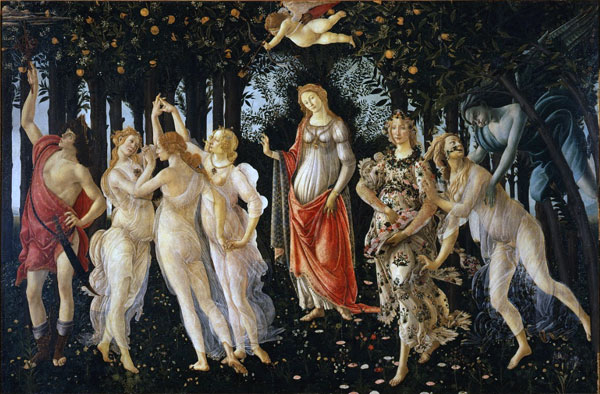Botticelli's La Primavera

Botticelli's La Primavera (Spring) is read from right to left. Zephyr, the blue figure, god of the west wind and of spring, catches the Greek nymph Chloris, and impregnates her, and she becomes her equivalent, the Roman Flora. At the center is Venus, with Cupid, above. Following this are the three Graces and Mercury standing alone and holding a caduceus with which he seems to ward off clouds.
The artwork was commissioned by a member of the Medici family. The painting has been analyzed textually—the literary sources of the composition studied, including Ovid and Lucretius. Critics have studied the grouping of figures. They have studied the colors. the figures' posture and action, the background; but there is no accepted interpretation. My reading of the work follows:
In Primavera, Botticelli employed Ovid, in part, to create a tableau of charming symmetry. Chloris, the Greek goddess of spring and flowers, is seized by Zepherus; and she turns into her Roman counterpart, Flora, who scatters flowers. In the center of the painting is the pregnant Venus, symbolizing regeneration. On the opposite side of the tableau, Mercury appears to protect the peaceful environment of Primavera. He is armed against intrusion and dispels the clouds, not turning his eyes to gaze at the idyllic scene; but one of the Graces catches sight of him just as Cupid lets fly his arrow at her. The aftermath is played out in the viewer's mind. In love, the Grace approaches Mercury; and he, too, falling in love, abandons his labor. The clouds roll in, the season advances, and Primavera, which cannot last forever anyway, is lost.

No comments:
Post a Comment